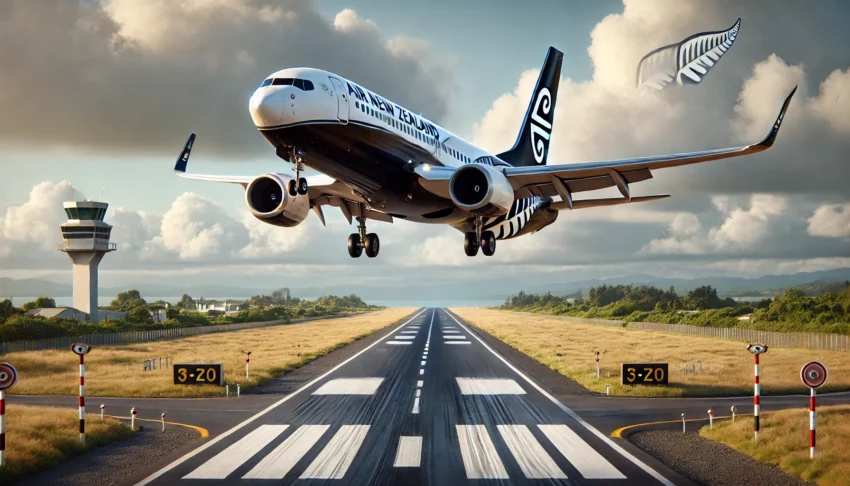
Air New Zealand’s flight NZ2, en route from Auckland (AKL) to New York City (JFK), made an unexpected emergency landing in Honolulu (HNL) recently due to a medical emergency onboard. While the diversion temporarily disrupted schedules and canceled the return flight NZ1 from JFK to Auckland, it showcased how aviation safety protocols prioritize traveler wellbeing, enabling tourism ecosystems to thrive with confidence.
This incident underscores the essential connection between aviation innovation, passenger care, and tourism growth. Airports and airlines worldwide depend on swift, effective responses to medical and security events to protect travelers, minimize disruption, and maintain the steady flow of visitors that power local economies.
A Prompt Medical Emergency Response Protecting Passenger Wellbeing and Tourism Confidence
On May 16, 2025, Air New Zealand’s Boeing 787-9 Dreamliner, operating flight NZ2, diverted to Honolulu to provide urgent medical attention to a passenger. The decision, led by aviation safety protocols, demonstrated how the industry places passenger health as an immediate priority.
Nathan McGraw, Air New Zealand’s Chief Safety and Risk Officer, confirmed the morning diversion but respected the passenger’s privacy by withholding medical details. Despite the interruption, passengers onboard were accommodated with care, reinforcing the airline’s commitment to traveler support.
The diversion’s ripple effect led to the cancellation of the return flight NZ1 from New York to Auckland because the aircraft and crew could not reposition in time without violating safety regulations on crew duty hours. Though inconvenient, this strict adherence to safety rules reflects industry best practices that ultimately preserve passenger and crew welfare.
Such responsive actions are vital to sustaining tourism confidence. When travelers know that airlines swiftly address emergencies and communicate transparently, it builds trust—a cornerstone of growing tourism sectors reliant on repeat and new visitors.
Economic Impact and Tourism Linkages of Aviation Safety Protocols
The Hawaiian diversion disrupted schedules but reveals broader economic and tourism-related implications. Honolulu International Airport (HNL), a crucial gateway to the Pacific, serves as a transit hub connecting Oceania with North America and beyond. Flight disruptions here affect not just passengers but regional tourism-dependent businesses in hospitality, ground transport, and retail.
Air New Zealand’s quick management helped mitigate extended delays, which in turn lessens financial losses for connected sectors and minimizes traveler dissatisfaction. Reliable aviation operations with robust emergency procedures support tourism marketing by assuring travelers of safe, dependable journeys.
Furthermore, this incident highlights how aviation safety investments—such as crew training, real-time monitoring, and emergency preparedness—directly enable tourism growth by safeguarding the traveler experience. Destinations linked by these routes benefit economically through visitor spending, job creation, and international exposure.
Passenger Experience: Seamless Communication and Care Enhance Tourism Appeal
Passenger handling during such events directly shapes tourism satisfaction. Air New Zealand offered immediate accommodations to stranded passengers and comprehensive rebooking options for those affected by cancellations. Communication channels including email updates, mobile app notifications, and a dedicated U.S. customer service line ensured travelers stayed informed and supported.
In today’s travel environment, where tourists increasingly seek transparency and reassurance, such service standards are vital. They reduce traveler anxiety and enhance destination reputation, key drivers for tourism recovery and growth.
This focus on passenger-centric responses aligns with global tourism marketing trends emphasizing seamless experiences—even when disruptions occur. Airlines and airports that master this approach position their destinations as traveler-friendly, fostering loyalty and positive word-of-mouth.
Aviation Innovations Behind Effective Emergency Management
The incident spotlights aviation innovation that makes modern emergency responses swift and effective. Air New Zealand’s Boeing 787 Dreamliner features advanced communication and health monitoring systems, supporting crew decisions in real time.
Crew training programs ensure that staff are prepared for in-flight medical emergencies, coordinating with ground teams at diversion airports like Honolulu to deliver rapid assistance. These innovations form part of a broader aviation ecosystem designed to protect travelers while minimizing operational impact.
Such systems directly benefit tourism by maintaining reliable flight schedules and minimizing disruptions, critical for destinations relying on steady visitor numbers and international connectivity.
Global Aviation and Tourism Implications
Air New Zealand’s emergency landing is one example of the aviation sector’s global commitment to passenger safety. Similar events worldwide, from medical emergencies to security threats, are met with rapid, coordinated responses that protect travelers and preserve tourism flows.
This shared approach strengthens tourism markets by promoting confidence across borders and ensuring travelers return despite occasional disruptions. Airports, airlines, and tourism boards increasingly collaborate to improve emergency protocols and communication strategies, recognizing their collective role in sustaining international travel demand.
Looking Ahead: Integrating Aviation Safety into Tourism Strategy
As global tourism rebounds and air travel demand grows, integrating advanced aviation safety measures into broader tourism strategies will be paramount. Airports like Honolulu and airlines like Air New Zealand continue to invest in technology, staff training, and passenger services that enable safe, seamless travel.
These investments pay dividends for tourism economies by preserving destination appeal and enabling quick recovery from incidents. Tour operators, hotels, and local businesses benefit from the assurance that travelers are protected, bolstering visitor confidence.
Ultimately, the synergy between aviation safety and tourism development will define the resilience and growth of travel hubs worldwide, sustaining millions of jobs and billions in economic activity.
Key Takeaways
- Air New Zealand’s quick medical diversion to Honolulu prioritized passenger health while minimizing disruption.
- The incident highlights the essential link between aviation safety and tourism confidence, critical for sustainable visitor growth.
- Reliable aviation operations support regional economies by maintaining steady tourism flows and protecting traveler experience.
- Passenger-centric communication during disruptions enhances destination reputation and encourages repeat visitation.
- Aviation innovations like crew training and real-time monitoring enable effective emergency management with minimal impact.
- Global aviation-tourism collaboration strengthens safety protocols and traveler trust across borders.
